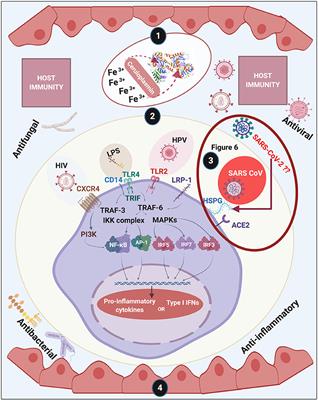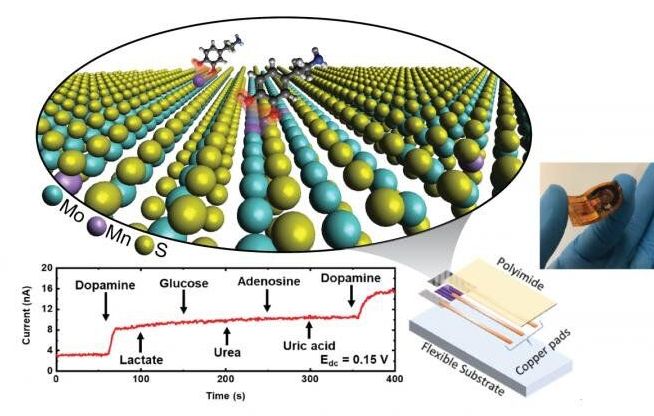Here is some advice from tech founders.
Bacteriophage can reduce bacterial growth in the lungs, limiting fluid build-up. This could decrease the mortality of patients affected by COVID-19, according to the peer-reviewed journal PHAGE: Therapy, Applications, and Research.
“The bacterial growth rate could potentially be reduced by the aerosol application of natural bacteriophages. These prey on the main species of bacteria known to cause respiratory failure,” says Marcin Wojewodzic, PhD, University of Birmingham (U.K.). Decreasing bacterial growth would also give the body more time to produce protective antibodies against the disease-causing coronavirus.
Used correctly, phages have an advantage here of being able to very specifically target the bacteria that cause secondary infections. They would remove the problematic bacterium but leave an otherwise fragile microbiome intact.” Martha Clokie, PhD, Editor-in-Chief of PHAGE and Professor of Microbiology, University of Leicester (U.K.)
The pandemic of the coronavirus disease (Covid-19) has caused the death of at least 270,000 people as of the 8th of May 2020. This work stresses the potential role of bacteriophages to decrease the mortality rate of patients infected by the severe acute respiratory syndrome coronavirus 2 (SARS-CoV-2) virus. The indirect cause of mortality in Covid-19 is miscommunication between the innate and adaptive immune systems, resulting in a failure to produce effective antibodies against the virus on time. Although further research is urgently needed, secondary bacterial infections in the respiratory system could potentially contribute to the high mortality rate observed among the elderly due to Covid-19. If bacterial growth, together with delayed production of antibodies, is a significant contributing factor to Covid-19’s mortality rate, then the additional time needed for the human body’s adaptive immune system to produce specific antibodies could be gained by reducing the bacterial growth rate in the respiratory system of a patient. Independently of that, the administration of synthetic antibodies against SARS-CoV-2 viruses could potentially decrease the viral load. The decrease of bacterial growth and the covalent binding of synthetic antibodies to viruses should further diminish the production of inflammatory fluids in the lungs of patients (the indirect cause of death). Although the first goal could potentially be achieved by antibiotics, I argue that other methods may be more effective or could be used together with antibiotics to decrease the growth rate of bacteria, and that respective clinical trials should be launched.
Both goals can be achieved by bacteriophages. The bacterial growth rate could potentially be reduced by the aerosol application of natural bacteriophages that prey on the main species of bacteria known to cause respiratory failure and should be harmless to a patient. Independently of that, synthetically changed bacteriophages could be used to quickly manufacture specific antibodies against SARS-CoV-2. This can be done via a Nobel Prize awarded technique called “phage display.” If it works, the patient is given extra time to produce their own specific antibodies against the SARS-CoV-2 virus and stop the damage caused by an excessive immunological reaction.
The coronavirus pandemic has caused the death of more than 270,000 people, as reported by 8th May 2020 by the World Health Organization (WHO). The crisis we observe is the joint effect of globalization and the properties of the new virus (SARS-CoV-2), which causes the disease, Covid-19. SARS-CoV-2 stands for “Severe Acute Respiratory Syndrome COronaVirus 2” describing one of the most dangerous symptoms in Covid-19. Although there have been past warnings of the threat that respiratory targeting viruses pose,1 the SARS-CoV-2 virus has spread at an unprecedented rate and it is devastating our health and economy globally. We urgently need multiple approaches to tackle this crisis.
Superinfections — a common complication in which a secondary bacterial infection occurs on top of the primary viral infection — are also to blame.
Early evidence (Trusted Source) suggests that about 50 percent of people who’ve died from COVID-19 also had a secondary bacterial or fungal infection, some of which were resistant to antibiotics.
First is a condition called ventilator-associated pneumonia (Trusted Source), a lung infection that develops when harmful germs get into a person’s lungs via the part of the ventilator that goes through the throat.
Nearly half of patients who’ve died from COVID-19 had a secondary bacterial infection. Sometimes, these secondary infections are resistant to antibiotics and antifungals, making them difficult and potentially impossible to treat.
Patients hospitalized with severe COVID-19 are susceptible to superinfections that occasionally are resistant to the antimicrobial available. Superinfections aren’t just a problem with COVID-19, and the novel coronavirus has shed light on a bigger issue we’re facing with drug-resistant bacteria.
50% of people who die of covid19 have bacterial co-infections. Procalcitonin (PCT) tests may be needed to predict who will have severe infections, and how to respond with adaquate treatment. Clearly the wrong testing is being done. People need 3 tests for covid. People need antigen tests, antibody tests, and Procalcitonin (PCT) tests to see the severity of sickness a person will have.
Procalcitonin (PCT) is a widely used biomarker to assess the risk of bacterial infection and disease progression. In patients with bacterial sepsis, suspected or confirmed lower respiratory tract infections, including community-acquired pneumonia, acute bronchitis and acute exacerbations of COPD, PCT can be a useful decision-making tool for antibiotic therapy (Schuetz et al. 2018). In addition, early evidence suggests that PCT may also be a valuable tool in identifying COVID-19 patients who may be at risk for bacterial co-infection.
Procalcitonin is widely used to assess the risk of bacterial infection and disease progression. Can it be an additional tool to identify COVID-19 patients at risk of severe disease?
Lactoferrin is a nutrient classically found in mammalian milk. It binds iron and is transferred via a variety of receptors into and between cells, serum, bile, and cerebrospinal fluid. It has important immunological properties, and is both antibacterial and antiviral. In particular, there is evidence that it can bind to at least some of the receptors used by coronaviruses and thereby block their entry. Of importance are Heparan Sulfate Proteoglycans (HSPGs) and the host receptor angiotensin-converting enzyme 2 (ACE2), as based on other activities lactoferrin might prevent severe acute respiratory syndrome coronavirus 2 (SARS-CoV-2) from attaching to the host cells. Lactoferrin (and more specifically enteric-coated LF because of increased bioavailability) may consequently be of preventive and therapeutic value during the present COVID-19 pandemic.
Lactoferrin (LF) or lactotransferrin has recently come under the spotlight, particularly with regards to the new coronavirus pandemic that started in 2019 (COVID-19). Diet and supplements support a well-functioning immune system, and favorably influence the body’s ability to fight infection. Although LF is produced by the body itself, as a secretion by exocrine glands (such as maternal milk or tears) and secondary granules of human neutrophils (1), it can also be taken as a supplement, where it then acts as nutraceutical or functional food. Our particular focus is on its role as an oral supplement. Here we also collate some of the evidence that shows how LF may be an important nutrient to support host immunity, including as an antibacterial and antiviral agent, but particularly with the current COVID-19 pandemic in mind.
We summarize what is already known about LF, including its immunological properties, as well as its antibacterial and antiviral activities. We also discuss how LF uses Heparan Sulfate Proteoglycans (HSPGs) on cell surfaces to facilitate entry. This is of particular importance to coronaviruses, as these viruses are considered to bind to the host cell by attaching first to HSPGs using them as preliminary docking sites on the host cell surface. LF is known to interfere with some of the receptors used by coronaviruses, it may thus contribute to the prevention and treatment of SARS CoV-2 infections. In COVID-19 infection, LF may therefore have a role to play, not only sequestering iron and inflammatory molecules that are severely increased during the cytokine burst, but also possibly in assisting by occupying receptors and HSPGs.
« In the form it is known today, macroeconomics began in 1936 with the publication of John Maynard Keynes’s “The General Theory of Employment, Interest and Money”. Its subsequent history can be divided into three eras. The era of policy which was guided by Keynes’s ideas began in the 1940s. By the 1970s it had encountered problems that it could not solve and so, in the 1980s, the monetarist era, most commonly associated with the work of Milton Friedman, began. In the 1990s and 2000s economists combined insights from both approaches. But now, in the wreckage left behind by the coronavirus pandemic, a new era is beginning. What does it hold? »
It is not yet clear where it will lead.
Ultrashort laser pulses induce unusual sound waves via a structural instability in a material.
RIKEN physicists have initiated unusual sound waves in a flake using ultrashort pulses of laser light and then created videos of their movement using electron microscopy. This advance should help engineers to achieve higher precision control of heat flow and sound in nanodevices using light.
A supersensitive dopamine detector can help in the early diagnosis of several disorders that result in too much or too little dopamine, according to a group led by Penn State and including Rensselaer Polytechnic Institute and universities in China and Japan.
Dopamine is an important neurotransmitter that can be used to diagnose disorders such as Parkinson’s disease, Alzheimer’s disease and schizophrenia.
“If you can develop a very sensitive, yet simple-to-use and portable, detector that can identify a wide range of dopamine concentration, for instance in sweat, that could help in non-invasive monitoring of an individual’s health,” said Aida Ebrahimi, assistant professor of electrical engineering, Penn State, and a corresponding author on a paper published Aug. 7 in Science Advances.
Space calendar 2020: Upcoming rocket launches, meteor showers, Mars missions and more!
Here’s everything significant happening in space science and solar system exploration for the rest of the year.
#SpaceWatchGL Opinion: Space Traffic Management – Impact of Large Constellations on Military Operations in Space.
🌚 #SpaceWatchGL
 As part of the partnership between SpaceWatch. Global and Joint Air Power Competence Centre, we have been granted permission to publish selected articles and texts. We are pleased to present “Space Traffic Management – Impact of Large Constellations on Military Operations in Space”, originally published by the Joint Air Power Competence Centre for the Conference Read Ahead 2020.
As part of the partnership between SpaceWatch. Global and Joint Air Power Competence Centre, we have been granted permission to publish selected articles and texts. We are pleased to present “Space Traffic Management – Impact of Large Constellations on Military Operations in Space”, originally published by the Joint Air Power Competence Centre for the Conference Read Ahead 2020.
by Mr. Marc Becker, DLR Space Administration, Bonn, Germany
As Space Actors Consolidate their Approaches to Space Traffic Management, What is the Role of the Military?
Space Traffic Management (STM) is currently one of the hottest topics in space policy. While a consensual definition of the term is yet to emerge, it becomes increasingly clear that the international community has to find ways to protect space infrastructure and guarantee the safe and sustainable use of outer space in the long run, amid an ever-growing number of actors and objects in the space domain.









